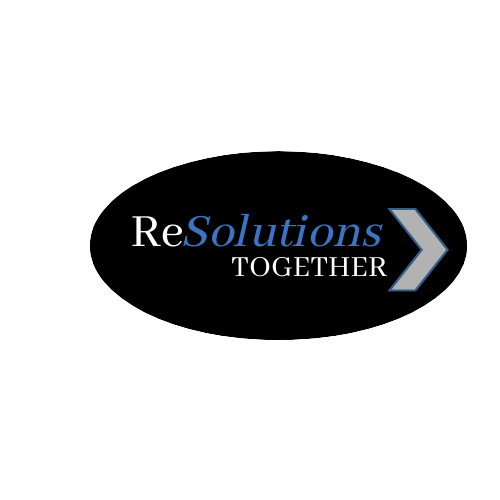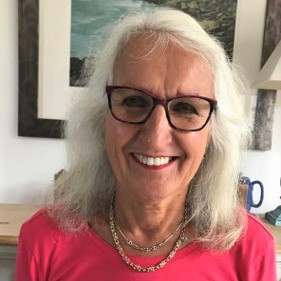CONFIDENTLY Lead families to safe solutions
Endorsed by Susie Essex

Making a Difference Together
We applied our 70+ years of combined child welfare experience to the Resolutions Approach by Susie Essex to bring you ReSolutions Together: the custom practice approach centered around child safety.
“I’ll emphasize again and again – for me the Resolutions Approach is all about building relational resilience.
That’s the bit I want for children. They know what the worries are, they know who to talk to, and they know there’s people who will take them seriously. Really – for any child – that’s what you need in life.“
– Susie Essex, BA Hons, CQSW, DSA, DASS

Susie is also the co-author of one of the Top 5 Child Welfare Books
The Resolutions Approach:
Working with ‘Denied’ Child Abuse
Interested in becoming ‘recognized’ as a Resolutions (ReSolutions Together) Practitioner?
Well, good news – SafeGenerations has what you need! We offer training and consulting to help you get recognized in the Resolutions (ReSolutions Together) practice. Susie Essex, the primary founder of the Resolutions Approach, has endorsed SafeGenerations to carry on this important work.
Here’s an overview of the recommended process, adaptable to your unique needs:
Step 1) Intro Workshop
Engage in a ReSolutions Together introductory workshop or online course, covering the basic philosophy, principles, theory, and engagement strategies.
Step 2) Words & Pictures™ Workshop
Dive into a Words & Pictures™ workshop or online course. You can also opt for a more in-depth workshop like the Safety Planning Practice Intensive, which includes Words & Pictures™.
Step 3) Safety Planning Workshop
Roll up your sleeves and join a safety planning workshop. This workshop should include the development of family driven safety plans in dispute/complex situations, utilizing ‘what if’ scenarios and/or the Similar but Different approach to look at disputes/complex issues.
Step 4) Case Example Submission
Show us what you’ve got! Submit an anonymized case study that includes how you engaged the family, the Words and Pictures™ Explanation, how you engaged everyone in the safety planning process, including ‘what if’ type information, and a Words and Pictures™ Safety Plan.
Step 5) Consult with SafeGen
Let’s chat! Consult with a SafeGenerations practitioner about a family you’re currently working with to continue building your Resolutions skills
SafeGenerations will provide a digital badge recognizing your status as a Resolutions (ReSolutions Together) practitioner. This badge signifies that you have undergone training and consultation with SafeGenerations, the organization endorsed by Susie Essex, the primary founder of the Resolutions approach.
We’re ready to explore opportunities with you! Reach out to us if you want to learn more about being a Resolutions practitioner. Email info@safegenerations.org to learn more or to set up a time to talk about your options.

Built on 40 Years of Child Welfare Best Practices
Expand for a List of References
| Bentovim. A. (as cited in Reder, P., Duncan, S., & Lucey, C., 2003. Studies in the Assessment of Parenting. East Sussex, England: Brunner-Routledge.) |
| Boffa, J. & Podesta, H. (2004). Partnership with families and risk assessment in child protection practice, Protecting Children, 19(2): 36–48. Caslor. |
| Brown, Brene. 2018. Dare to Lead. London, England: Vermilion. |
| Child Welfare Information Gateway. (2020). Protective factors approaches in child welfare. Washington, DC: U.S. Department of Health and Human Services, Administration for Children and Families, Children’s Bureau. |
| Covey, S. (2004). The 7 Habits of Highly Effective People: Powerful Lessons in Personal Change. New York, NY: Free Press |
| Dale, P., Green, R., & Fellows, R., (2005). Child Protection Assessment Following Serious Injuries to Infants: Fine Judgements. Hoboken, New Jersey: Wiley. |
| Davis, T. (2020, April 8). 5 Reasons Clarifying Values Brings Hope in Crisis. Retrieved from http://yourpositivitycoach.com/5-reasons-clarifying-your-values-brings-hope-in-crisis/ |
| DeJong, P. & Berg, I. (2008). Interviewing for Solutions (3rd ed.). Belmont, CA: Brooks/Cole. |
| DeSanto, P. (2012). Effective Addiction Treatment: The Minnesota Alternative. MN, PaulaDeSanto |
| Essex S., & Gumbleton J. (1999). “Similar but Different“ Conversations. Australian and the New Zealand Journal of Family Therapy, 20(3). |
| Essex S., Gumbleton J., & Luger C. (1996). Resolutions; Working With Families Where Responsibility for Abuse is Denied. Child Abuse Review, 5, 191-202. |
| Essex S., Gumbleton J., & Luger C. (1998). Place of safety?. Community Care, 1232, 23-29. |
| Essex S., Gumbleton J., Luger C., & Lusk A. (1997). A suitable case for treatment? Community Care, 1159, 20-26. |
| Essex, S. (2010). Working With Denied/Disputed Child Abuse Concerns: The Resolutions Approach [PowerPoint slides]. |
| Forcehimes, A., Miller, W., & Zweben, A. (2011). Treating Addiction, A Guide for Professionals. New York, NY: The Guilford Press |
| Furniss, T. (2013). The multiprofessional handbook of child sexual abuse: Integrated management, therapy, and legal intervention. London: Routledge. |
| Geertz, C. (2000). Available light: Anthropological reflections on philosophical topics. Princeton University Press. |
| Good News Network. (2020). Positive Outlook Predicts Less Memory Decline, Says New Research. Association for Psychological Science. |
| Gumbleton J. (2004). The Reunification of Children in Serious Child Protection Cases. Context, 74, 2-5. |
| Gumbleton J., & Lusk A. (1999). Child Abuse; Rehabilitation Without Admission-A New Way Forward. Family Law, 29, 822-825. |
| Gumbleton J., Untreatable families? Working with “denial” in cases of severe child abuse, MSc Dissertation, unpublished. |
| Hiles M., & Luger C. (2006) The Resolutions Approach: Working with “Denial” in Child Protection Cases. Journal of Systemic Therapies, 25, 24-37. |
| Hiles M., Essex S., Fox A., & Luger C. (2008) The Words and Pictures Storyboard: Making Sense for Children and Families. Context, 97, 13-19. |
| Merck, Amanda. (2018, February 6). 4 Ways Childhood Trauma Changes a Child’s Brain and Body. Retrieved from https://salud-america.org/4-ways-childhood-trauma-changes-childs-brain-body/ |
| Niemand, A. (2018, May 10). Science of Story Building: Narrative Transportation. Retrieved from https://medium.com/science-of-story-building/science-of-story-building-narrative-transportation-923b2701e286 |
| Parker, S. (2011). Involving children and families: Tools and processes for working collaboratively with children and families. Handouts for the training with Connected Families and Sonja Parker; September 2011. |
| Reilly, T. (2020). Ted Lasso’s Tips for Managing Conflict. Curious. https://medium.com/curious/ted-lassos-tips-for-managing-conflict-7a9478232d96 |
| Roberts, Y. H., Shimshock, S., O’Brien, K., Claps, M., Cabrera, J., & Rozanski, T. (2018). From Data to Practice: The Impact of Placement with Family on Safety, Permanency, and Well-Being. Casey Family Programs: https://caseyfamilypro-wpengine.netdna-ssl.com/media/1896-CS-From-Data-to-Practice-2018.pdf |
| Schein, E. (2013). Humble Inquiry: The Gentle Art of Asking Instead of Telling. San Francisco, CA: Berrett-Koehler Publishers, Inc. |
| Schwantes, M. (2018, April 3). 8 Successful Mental Habits to Defeat Fear, Worry, and Anxiety. Retrieved from https://www.inc.com/marcel-schwantes/8-mental-hacks-that-will-keep-you-strong-under-control-during-tough-times.html |
| Small, T. Brain Bulletin #47- The Science of Hope. Retrieved from https://www.terrysmall.com/blog/brain-bulletin-47-the-science-of-hope |
| Smith, Emily E. (2014, October 29). Social Connection Makes a Better Brain. Retrieved from https://www.theatlantic.com/health/archive/2013/10/social-connection-makes-a-better-brain/280934/ |
| Turnell, A. & Essex, S. (2006). Working with ‘Denied’ Child Abuse: The Resolutions Approach. Buckingham., UK: Open University Press. |
| Waldman, M.R. (2015, June 7). Why Hope May Be the Most Important Thing For Your Brain, Neuro-Exercises, Health, Happiness. Retrieved from http://www.mindfullyalive.com/blog/2015/6/7/why-hope-may-be-the-most-important-thing-for-your-brain |
| Wave Trust. (n.d). What are adverse childhood experiences? https://www.wavetrust.org/adverse-childhood-experiences#:~:text=Adverse%20childhood%20experiences%20(ACEs)%20are,to%20a%20%E2%80%9Csafe%E2%80%9D%20state. |
| Weld, N., Parker, S. (n.d.). Using the ‘Three Houses’ Tool. Perth, Western Australia: Partnering for Safety. Available at: https://www.partneringforsafety.com/store/p22/Three_Houses_booklet.html |
